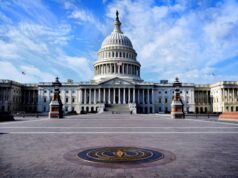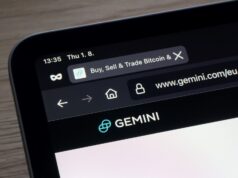The high-stakes battle between Ripple Labs and the U.S. Securities and Exchange Commission (SEC) is again garnering the crypto community’s attention. At its core, the dispute revolves around the future of the XRP token. Ripple defends against the SEC’s allegations of violating securities laws. The verdict of this case will have significant implications not only for Ripple but also for the larger cryptocurrency market. Let’s delve into the complexities of this conflict and understand why Ripple XRP is currently being litigated in court.
The SEC’s Legal Basis for Imposing the Fine
The SEC’s legal action against Ripple began in 2020. The case revolves around the argument about whether XRP should be considered a security under U.S. Securities laws. According to the SEC Ripple allegedly violated securities regulations by selling XRP tokens to investors, which they claim is unlawful. Its position is that XRP qualifies as a security due to its design. The direct involvement of Ripple executives in promoting and distributing it further supports this assertion.
The SEC states that Ripple exerted significant control over the supply and distribution of XRP. This positioned it more like a traditional security rather than a decentralized digital currency. The SEC’s decision to penalize Ripple Labs stems primarily from the allegation the company breached securities regulations by selling XRP tokens. They root their enforcement action in the Securities Act of 1933. The act mandates that securities offered or sold in the United States must be registered with the SEC unless an exemption is applicable. The Commission further contends that Ripple raised significant funds over several years violating the registration requirements.
The SEC also argues in court that Ripple selling XRP constituted an investment contract, making XRP itself a security under the Howey Test. This test was set by the Supreme Court in 1946. It describes an investment agreement as a deal where someone invests money in a shared project, hoping for profits coming solely from the work of others. The SEC alleges that Ripple’s actions met these criteria, thereby subjecting XRP to securities laws.
Despite some legal victories for Ripple, the SEC continues to assert that institutional sales of XRP were illegal. It is pushing for a hefty fine of $2 billion on Ripple Labs. The requested amount includes $876 million in disgorgement, $198 million in prejudgment interest, and an additional $876 million as a civil penalty. Its responsibility to safeguard investors and uphold efficient markets reinforces the SEC’s stance. Through its enforcement actions targeting Ripple, the SEC aims to maintain integrity and ensure adherence to securities laws, within the cryptocurrency sector.
Ripple’s Defense Against the Fine
Ripple vehemently denies the SEC’s allegations, asserting that XRP is not a security. It is rather a digital currency similar to Bitcoin and Ethereum. The company argues that XRP operates on a decentralized ledger called the XRP Ledger, distinct from Ripple’s corporate operations. Furthermore, Ripple contends that the SEC’s enforcement action caused significant harm to XRP holders and the broader cryptocurrency market, citing disruptions to XRP trading and investment activities.
Ripple made a counterproposal in response to the SEC’s proposed $2 billion fine. According to sources close to the matter, it offered to settle the case for a significantly lower penalty, less than $10 million. However, the counteroffer reportedly includes certain compliance measures and regulatory commitments from Ripple. These would address the SEC’s concerns and ensure future compliance with securities laws.
Ripple maintains that XRP’s utility as a means of facilitating cross-border payments and remittances distinguishes it from traditional securities. Therefore it should not be subject to the same regulatory scrutiny. The company stresses its dedication to complying with laws and rules. But they also call for clear guidelines and stability in the regulatory landscape for cryptocurrencies.
Predictions for the Future of XRP
Given the legal, industry analysts and enthusiasts remain divided on the token’s prospects. Some predict that a favorable outcome for Ripple in the SEC lawsuit could pave the way for XRP’s resurgence, potentially leading to significant price appreciation. For instance, analysts like Armando Pantoja have suggested that XRP’s value could skyrocket to anywhere between $8 to $20 by 2026. He is drawing parallels with its performance during the 2017 bull market. Additionally, Ripple CEO Brad Garlinghouse has expressed optimism about XRP’s long-term potential, emphasizing its utility in revolutionizing cross-border payments.
On the other hand, some are concerned that prolonged legal battles and regulatory scrutiny could weaken investor confidence in XRP. That could cause continued volatility and downward pressure on its price. The ongoing litigation against the SEC has already led to price fluctuations for XRP; and the final ruling is still up in the air. Additionally, the debate on whether XRP will be labeled as a security or a digital currency contributes to uncertainty about its trajectory. Some analysts caution against overly optimistic projections. They suggest that investors approach XRP with caution until regulations are more clear.
As Ripple’s legal dispute with the SEC continues, the crypto community eagerly awaits the impact on XRP and the wider digital asset landscape. The stakes have never been higher with the SEC pursuing a hefty $2 billion penalty and Ripple vehemently defending its position. Whether XRP emerges victorious or faces further setbacks remains to be seen. One thing, however, is certain – the outcome of this battle will shape the future of Ripple and its native digital asset XRP.
Read more: Will Ripple’s XRP Explode in 2024?











[…] >>> Read more: Ripple XRP Still In Court – SEC Pursues $2 Billion Fine […]
[…] >>> Read more: Ripple XRP Still In Court – SEC Pursues $2 Billion Fine […]